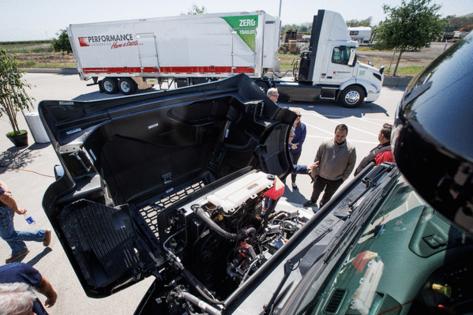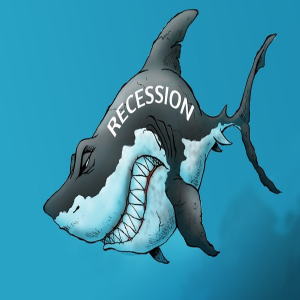Millions of semi-trucks on US roads still rely on fossil fuels. Cutting-edge EV tech in California could change that
Published in Automotive News
On a recent cloudless spring day on the outskirts of Gilroy, California, Christian Martorella accelerated an 18-wheeler past budding orchards. But instead of the roar of a diesel engine, the cab filled with the gentle hum of an electric motor.
After driving diesel trucks for 10 years, Martorella initially eyed electric trucks skeptically. Now, he has nothing but praise for the cutting-edge machines, which he says ride smoother, accelerate faster, and are all around easier to maintain.
“It’s crazy how consistent that they’ve been,” he said. “(They) definitely knocked it out of the park.”
The truck is one of seven heavy-duty electric trucks deployed to haul food at Performance Food Group in Gilroy, supported by an array of brand new charging stations, an upcoming installation of solar panels and a fleet of all-electric refrigerated trailers.
While the Gilroy site is one of only a handful across the country experimenting with the emissions-free tech for semis, state regulations will push more and more trucks in that direction in the coming years. By 2036, manufacturers will only be able to sell zero emissions heavy-duty trucks in California, and many fleets will gradually be required to incorporate more zero emission vehicles over the next decade.
“It’s important for anyone in their business to be thinking about these things. But they are out ahead of the curve,” Bill Robertson, vehicle program specialist for California Air Review Board. “We’re pretty excited about what they’re doing there.”
The Gilroy site will serve as a test bed for the new technologies — both for the company and the industry — allowing them to understand the strengths and limitations of the tech in the real world. “We’ll continue to learn from this and add other technologies to it,” said Jeff Williamson, senior vice president of operations for Performance Food Group. “This is somewhat of our flagship, our model that we intend to build facilities on as we go forward.”
Historically, trucking and shipping have been far from green. According to the Environmental Protection Agency, transportation makes up about 29% of greenhouse gas emissions in the U.S., and about a quarter of that comes from the medium and heavy duty trucks that drive industry and lug freight across the country. Almost all of those trucks run on diesel, a fuel with emissions that are associated with health risks such as asthma, and heart and lung disease.
“Diesel’s been a great fuel for us. We just didn’t realize 75 years ago that it was gonna kill the planet,” said Mike Roeth, executive director of the North American Council for Freight Efficiency. “Now we got to do something different.”
But doing “something different” is hard, especially for big rigs. Only 0.02% of the more than 5 million heavy duty trucks in the U.S. are zero emission, according CALSTART, an organization that researches clean transportation. And switching over more of those trucks to electric comes with some serious hurdles.
...continued
©#YR@ MediaNews Group, Inc. Visit at mercurynews.com. Distributed by Tribune Content Agency, LLC.







Comments